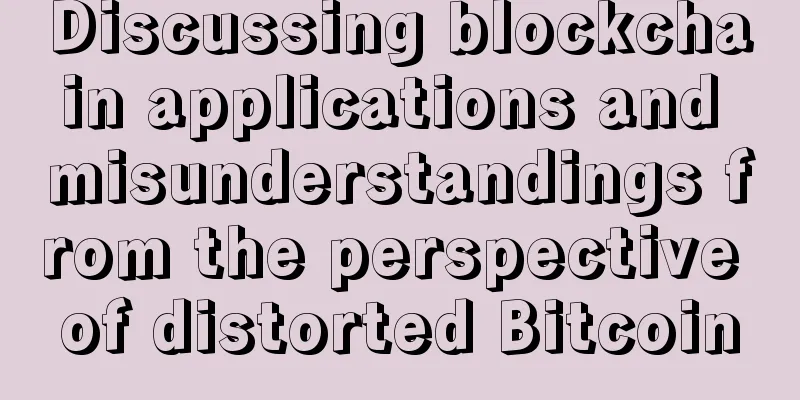Is the crypto industry ready for Wall Street money to flow in?

|
Interest in cryptocurrencies is certainly increasing among Wall Street firms. Grayscale’s recent victory over the SEC and BlackRock’s ongoing discussions around a spot Bitcoin ETF sparked a major shift in market sentiment in the cryptocurrency space. Several companies including Valkyrie, Bitwise, WisdomTree, and Invesco quickly followed suit and filed for their own ETFs. Traditional financial players have also made notable advances in the cryptocurrency space. Deutsche Bank, a $1.4 trillion asset manager, has applied for a license to provide cryptocurrency custody services, while EDX Markets, a new cryptocurrency exchange backed by Citadel, Fidelity, and Charles Schwab, was recently launched. PayPal has also continued its involvement in the space by launching its own stablecoin project. However, many wonder whether cryptocurrencies are ready for a massive influx of institutional capital. It must be. How are the preparations going? Determining whether the cryptocurrency space is ready depends on different factors, including regulatory clarity and the robustness of infrastructure providers and market makers. They all play a key role in retaining institutional investors as they ensure that healthy, fair, and integrated markets are maintained. Overall, Wall Street’s centralized finance is ready. When we talk about CeFi, we’re talking about well-known cryptocurrency platforms that already look a lot like the types of services that traditional financial players are familiar with. Platforms like Coinbase and Gemini. By largely sticking to Web2 infrastructure, they have been able to handle the scale of Wall Street operations. These CeFi companies already have healthy market volumes and actively engaged market makers. Most jurisdictions are also seeing increasing regulatory clarity on how these services can be used. Of course, there are still some details to be worked out, such as the lack of true prime brokerage and reliable insurance at scale. However, given enough time and larger balance sheets, these will surely be added to the system. They are not fundamental blockers. Bringing DeFi to the Desktop When we look at DeFi, we have to see that the space can play two different roles in the crypto market. DeFi can be used as a settlement layer for non-custodial services that retains certain centralized characteristics (referred to here as “backend DeFi”). But it can also be purely decentralized (“pure DeFi”). The case of DeFi as a settlement layer (backend DeFi) is similar to CeFi. These types of operations still provide some centralized oversight, which makes them more compatible with traditional finance. Some examples include OTC services with automated settlements through Fireblocks, Copper, or other digital asset custodians. In addition, there are digital asset settlement platforms for derivatives trading, such as Paradigm for digital asset options settlement. Backend DeFi is of course equipped with the necessary infrastructure to act as a settlement layer. Many Layer2 DeFis provide the speed and cost required for Wall Street operations, and allow market makers to provide healthy liquidity and the ability to absorb large volumes of transactions. Their oversight capabilities also enable them to comply with local regulations. When it comes to getting approval from large institutions, a longer due diligence process may be required. However, the full acceptance of backend DeFi by institutions also requires understanding the technology and security behind it. Pure DeFi definitely has potential as well. However, the situation here may be slightly different than in less decentralized alternatives. When we talk about pure DeFi, we are talking about most protocols that work in a permissionless and decentralized way, such as Uniswap or Curve Finance. This sector represents the biggest paradigm shift, but on the contrary, is still far from being ready for institutional adoption. Pure DeFi protocols are still subject to too many black swan factors due to the experimental nature of their infrastructure. The Curve Finance vulnerability is a recent famous example. This situation may be too risky for most institutional investors, who are not ready to trust the software alone to ensure the safety of their funds. Its permissionless nature also brings regulatory challenges. This is not to say that pure DeFi doesn’t represent an interesting point of exploration for all market participants — it may even be the most interesting area to explore. However, for now it should be viewed as a springboard for new types of financial instruments that may eventually make it to a more institution-friendly environment. Be well prepared All in all, the most conservative stance on the cryptocurrency industry’s ability to handle the influx of money from Wall Street is that it is closer to being ready. Some industries are more ready than others, but we only need to focus on the ones that may be of interest initially. As traditional financial institutions continue to experiment, the most likely scenario is that they will start by participating in CeFi - an industry that is ready for this kind of attention. As backend DeFi and pure DeFi develop, Wall Street's attitude towards the cryptocurrency market will continue to heat up. |
<<: My view on Singapore Token2049
>>: HTX, Huobi’s next “ten-year commitment”?
Recommend
Deutsche Börse sets up a special Internet finance risk fund, headed by a former UBS executive
【Abstract】The exchange hopes to increase its sing...
Is it a good fortune for a man with broken palms on both hands? Palmistry analysis of a man with broken palms on his right hand
A broken palm refers to a palm that is cut across...
There is a mole between the big toe of a woman's toes. What does a mole on the toes mean?
Everyone has moles on their body to a greater or ...
What effect does vertical lines on the earlobe have on people?
Although the earlobe is not very noticeable at or...
Gu Yanxi: Is Bitcoin the mother of all bubbles?
Recently, Michael Hartnett, chief investment stra...
What kind of palmistry is good at dancing?
People with long little fingers, double emotion l...
What is the fate of a woman with a Sichuan-shaped wrinkle on her brow? What is the personality of a woman with a Sichuan-shaped wrinkle on her brow?
Nowadays, people pay great attention to their app...
The face of a man who is still unfaithful after marriage
In the eyes of girls, being unfaithful is a man’s...
Bitcoin Exchange Coinfloor Launches New P2P Marketplace for Buying Bitcoin
London-based bitcoin exchange Coinfloor has annou...
Illustration of the cheating line on men's palm
Illustration of the cheating line on men's pa...
What kind of face will bring good fortune to women?
As one of the traditional physiognomy techniques, ...
A panoramic review of South Korea’s latest crypto regulatory landscape
Seung Jae Yoo, Gye-Jeong Kim and Sung Yun Kang fr...
What does a sunken chin mean?
The chin represents fortune, so if a woman’s chin...
BTC once again lost the 30,000 mark, and the bulls’ dream was shattered
Author | Hashipi Analysis Team...
What does it mean if a woman has a mole on the palm of her right hand?
Moles often appear in different positions, and mo...









